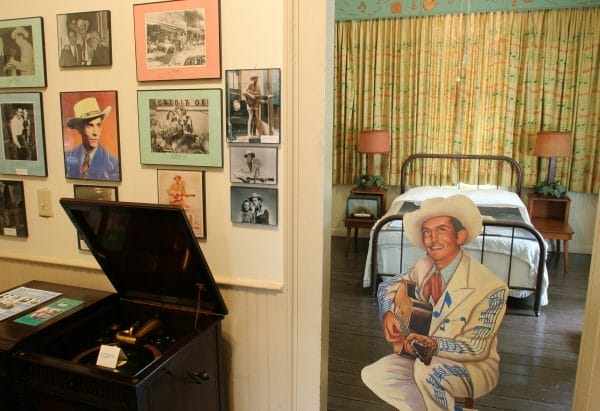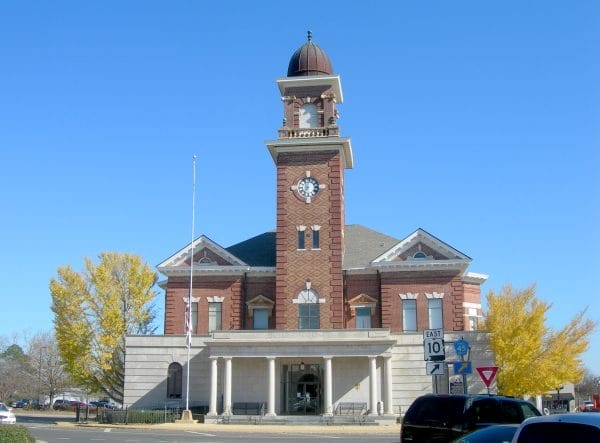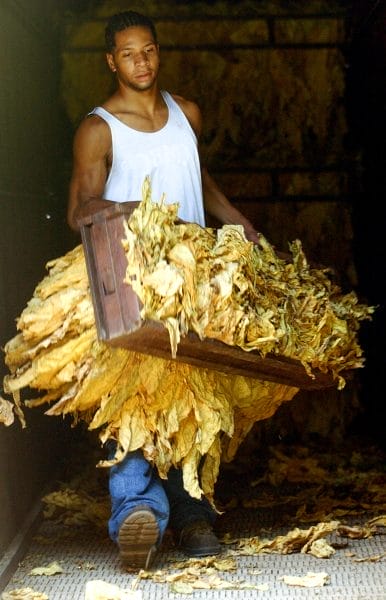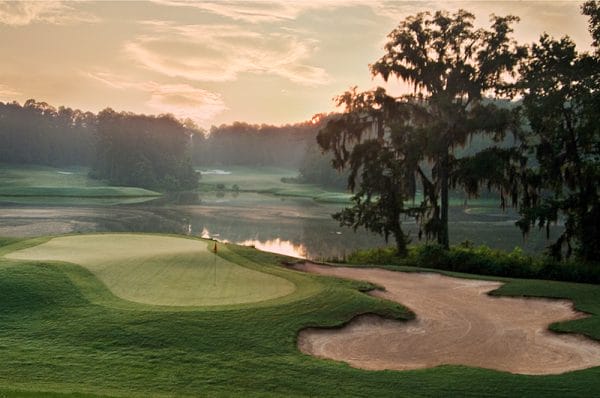Butler County
Located in south Alabama, Butler County was a railroad hub during the nineteenth and early twentieth centuries. Famous as the birthplace of Hank Williams Sr., the county is also a stop on the Robert Trent Jones Golf Trail. It is governed by an elected four-member commission.
- Founding Date: December 13, 1819
- Area: 779 square miles
- Population: 19,051 (2020 Census estimate)
- Major Waterways: Pigeon Creek
- Major Highways: I-65, U.S. 31
- County Seat: Greenville
- Largest City: Greenville
History
 Hank Williams Boyhood Home and Museum
Butler County was created by an act of the Alabama Legislature on December 13, 1819. Carved from portions of Conecuh and Monroe Counties, it was named for early settler Capt. William Butler, a veteran of the Creek War of 1813-14. The first settlers came to the county via the Federal Road from Georgia and the Carolinas after the Creeks were defeated in the war. Threatened by white settlement, a Creek war party attacked and killed two families in March 1818 in what became known as the Ogly Massacre. Several days later, Butler and several other men were attacked and killed by Creek leader Savannah Jack and his band of warriors while traveling between Fort Dale and Fort Bibb, west of Greenville. In response, local settler Thomas Gary built Fort Gary and charged settlers for protection within the stockade. Indignant over the fees, locals petitioned Gov. William Wyatt Bibb for protection. He sent Col. Samuel Dale, who along with settlers and militia constructed Fort Dale. After the Treaty of Fort Jackson, the Creeks were forced to move west of the Coosa River, and additional settlers poured into the county. During the first half of the nineteenth century, Butler County was known as the “Saratoga of South Alabama,” after the famed New York health-spa town of Saratoga Springs, for its mineral waters, with many guests staying at the Butler Springs Hotel in Butler Springs.
Hank Williams Boyhood Home and Museum
Butler County was created by an act of the Alabama Legislature on December 13, 1819. Carved from portions of Conecuh and Monroe Counties, it was named for early settler Capt. William Butler, a veteran of the Creek War of 1813-14. The first settlers came to the county via the Federal Road from Georgia and the Carolinas after the Creeks were defeated in the war. Threatened by white settlement, a Creek war party attacked and killed two families in March 1818 in what became known as the Ogly Massacre. Several days later, Butler and several other men were attacked and killed by Creek leader Savannah Jack and his band of warriors while traveling between Fort Dale and Fort Bibb, west of Greenville. In response, local settler Thomas Gary built Fort Gary and charged settlers for protection within the stockade. Indignant over the fees, locals petitioned Gov. William Wyatt Bibb for protection. He sent Col. Samuel Dale, who along with settlers and militia constructed Fort Dale. After the Treaty of Fort Jackson, the Creeks were forced to move west of the Coosa River, and additional settlers poured into the county. During the first half of the nineteenth century, Butler County was known as the “Saratoga of South Alabama,” after the famed New York health-spa town of Saratoga Springs, for its mineral waters, with many guests staying at the Butler Springs Hotel in Butler Springs.
Major Cities and Demographics
 Butler County Courthouse
According to 2020 Census estimates, Butler County recorded a population of 19,051. Approximately 51.6 percent of respondents identified themselves as white, 44.6 percent as African American, 1.6 percent as two or more races, 1.5 percent as Hispanic, 1.3 percent as Asian, and 0.3 percent as Native American. The county seat, Greenville, had a population of 7,478. Other significant population centers are Georgiana and McKenzie. The median household income in Butler County was $44,850, as compared with $52,035 for the state as a whole, and the per capita income was $23,415, as compared with $28,934 for the state as a whole.
Butler County Courthouse
According to 2020 Census estimates, Butler County recorded a population of 19,051. Approximately 51.6 percent of respondents identified themselves as white, 44.6 percent as African American, 1.6 percent as two or more races, 1.5 percent as Hispanic, 1.3 percent as Asian, and 0.3 percent as Native American. The county seat, Greenville, had a population of 7,478. Other significant population centers are Georgiana and McKenzie. The median household income in Butler County was $44,850, as compared with $52,035 for the state as a whole, and the per capita income was $23,415, as compared with $28,934 for the state as a whole.
Economy
 Tobacco Farm
Prior to the Civil War, cotton farming was the main occupation in Butler County. During the 1850s, lines along the Ohio and Mobile Railroad were constructed, making the county a major trading center. Greenville, the current county seat, was a railroad town and became the center of commerce between Montgomery and south Alabama. During the late nineteenth century, the construction of the Louisville and Nashville Railroad through Greenville contributed further to the town’s success. At the turn of the century, Gulf Red Cedar Company and Factory in Greenville became a noted bucket manufacturing enterprise.
Tobacco Farm
Prior to the Civil War, cotton farming was the main occupation in Butler County. During the 1850s, lines along the Ohio and Mobile Railroad were constructed, making the county a major trading center. Greenville, the current county seat, was a railroad town and became the center of commerce between Montgomery and south Alabama. During the late nineteenth century, the construction of the Louisville and Nashville Railroad through Greenville contributed further to the town’s success. At the turn of the century, Gulf Red Cedar Company and Factory in Greenville became a noted bucket manufacturing enterprise.
Employment
According to 2020 Census estimates, the workforce in Butler County was divided among the following industrial categories:
- Educational services, and health care and social assistance (26.6 percent)
- Retail trade (12.5 percent)
- Manufacturing (11.5 percent)
- Arts, entertainment, and recreation, and accommodation and food services (10.7 percent)
- Other services, except public administration (8.4 percent)
- Transportation and warehousing, and utilities (6.7 percent)
- Professional, scientific, management, administrative, and waste management services (6.5 percent)
- Construction (6.4 percent)
- Public administration (5.4 percent)
- Information (4.9 percent)
- Finance and insurance, and real estate, rental, and leasing (2.7 percent)
- Wholesale trade (1.1 percent)
- Agriculture, forestry, fishing and hunting, and extractive (0.8 percent)
Education
The Butler County School System oversees eight schools.
Geography
 Butler County Map
Comprising approximately 779 square miles, Butler County lies in the south-central portion of the state, within the East Gulf Coastal Plain physiographic section. It is bounded by Monroe and Wilcox counties to the west, Lowndes County to the north, Crenshaw County to the east, and Covington and Conecuh counties to the south.
Butler County Map
Comprising approximately 779 square miles, Butler County lies in the south-central portion of the state, within the East Gulf Coastal Plain physiographic section. It is bounded by Monroe and Wilcox counties to the west, Lowndes County to the north, Crenshaw County to the east, and Covington and Conecuh counties to the south.
Although no major waterways run through the county, several tributaries intersect the area. Wolf Creek, a tributary of the Alabama River, runs through the northwestern corner of the county, while Panther, Persimmon, and Pigeon Creeks, all tributaries of the Conecuh River, run through the southern section of the county. Interstate 65 is Butler County’s major transportation route, running north-south through the center of the county. U.S. 31 and State Route 10 are the county’s other major transportation arteries.
Events and Places of Interest
 Cambrian Ridge
Known as the Camellia City for its beautiful flowers, Greenville contains numerous historic structures, including the Old City Jail, which is the oldest unaltered building in the county. The Commerce Street Residential Historic District as well as many other homes and commercial buildings are on the National Register of Historic Places. The Greenville Railroad Depot preserves the rail and economic history of the town and also hosts exhibits works from local artists. The Ridge, a historic plantation community, was constructed by wealthy residents to escape the diseases of the lowland areas. In addition to its historic homes, The Ridge is today home to a premier golf course, Cambrian Ridge, which is on the famed Robert Trent Jones Golf Trail. Greenville and Georgiana were once home to legendary country singer Hank Williams Sr.; his boyhood home in Georgiana is operated as a museum, and the city hosts its annual Hank Williams Festival each June. Each summer, Greenville hosts an annual Watermelon Festival. The historic Ritz Theater, a former movie palace, now serves as Greenville’s performing arts center.
Cambrian Ridge
Known as the Camellia City for its beautiful flowers, Greenville contains numerous historic structures, including the Old City Jail, which is the oldest unaltered building in the county. The Commerce Street Residential Historic District as well as many other homes and commercial buildings are on the National Register of Historic Places. The Greenville Railroad Depot preserves the rail and economic history of the town and also hosts exhibits works from local artists. The Ridge, a historic plantation community, was constructed by wealthy residents to escape the diseases of the lowland areas. In addition to its historic homes, The Ridge is today home to a premier golf course, Cambrian Ridge, which is on the famed Robert Trent Jones Golf Trail. Greenville and Georgiana were once home to legendary country singer Hank Williams Sr.; his boyhood home in Georgiana is operated as a museum, and the city hosts its annual Hank Williams Festival each June. Each summer, Greenville hosts an annual Watermelon Festival. The historic Ritz Theater, a former movie palace, now serves as Greenville’s performing arts center.
Conecuh National Forest lies largely within Butler County on its southern border and offers fishing, hiking, and other outdoor recreational opportunities. Butler County State Wildlife Management Area, northwest of Georgiana, offers fishing and hunting, and fishing and boating activities are available at Sherling Lake in Greenville.
Further Reading
- The Heritage of Butler County, Alabama. Clanton, Ala.: Heritage Publishing Consultants, 2003.
- Barefield, Marilyn Davis. Butler County in the Nineteenth Century. Birmingham, Ala.: Hahn Publishing, 1978.
- Little, John Buckner. History of Butler County, Alabama, 1815-1885. Cincinnati: Elm Street Print Company, 1885.



